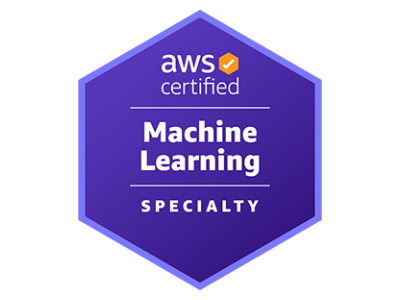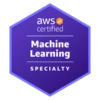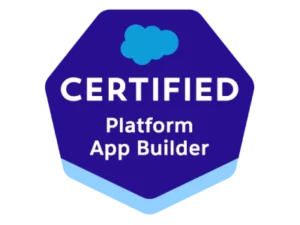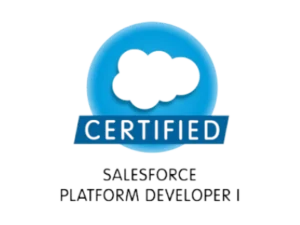AWS Machine Learning with Data Analytics
AWS data analytics and machine learning Important subjects covered in the course include Amazon Redshift, AWS Glue and DataBrew, AWS Datalake Formation, and AWS Sagemaker MLOps using Python. You will get practical knowledge of MLOps procedures, data repository management, and ML pipeline orchestration. Explore data lakes and learn how to use AWS Lake Formation for data intake, categorization, and preparation. Learn how to use AWS Glue and DataBrew to improve your data transformation and profiling abilities. Lastly, use Amazon Redshift to develop ML models, continuously load data, and create scalable data warehouses. Come learn how to effectively build and monitor reliable machine learning systems on AWS.
Overview
With the help of Koenig Solutions’ extensive training, discover the possibilities of AWS Machine Learning with Data Analytics. Important subjects covered in this session include Amazon Redshift, AWS Glue and DataBrew, AWS Datalake Formation, and AWS Sagemaker MLOps using Python. You will get practical knowledge of MLOps procedures, data repository management, and ML pipeline orchestration. Explore data lakes and learn how to use AWS Lake Formation for data intake, categorization, and preparation. Learn how to use AWS Glue and DataBrew to improve your data transformation and profiling abilities. Lastly, use Amazon Redshift to develop ML models, continuously load data, and create scalable data warehouses. Come learn how to effectively build and monitor reliable machine learning systems on AWS.
What you will Learn in this AWS Machine Learning with Data Analytics Course?
- Understand MLOps Principles: Learn the processes, people, technology, security, and governance involved in MLOps including MLOps maturity models.
- Manage Data and Code Repositories: Gain expertise in managing data, version control of ML models, and maintaining code repositories for machine learning projects.
- Machine Learning Pipeline Orchestration: Understand end-to-end orchestration using AWS Step Functions and SageMaker Projects.
- Utilize Amazon SageMaker: Get hands-on experience with Amazon SageMaker for problem formulation, preprocessing, model training, evaluation, and deployment.
- Implement ML Deployment Pipelines: Learn to create and manage robust deployment pipelines, along with monitoring and remediating issues in ML solutions.
- Build and Manage Data Lakes: Acquire skills in data ingestion, cataloging, preparation, and analytics using AWS Lake Formation.
- **Utilize AWS Glue and DataBrew
Who should take up this AWS Machine Learning with Data Analytics
Course?
- Data Scientists
- Machine Learning Engineers
- Data Engineers
- DevOps Engineers
- Cloud Solutions Architects
- Big Data Analysts
- IT Managers
- Software Developers
- AI/ML Enthusiasts
- System Administrators
- Business Intelligence Developers
- Data Analysts
- IT Consultants
- Technical Project Managers
- Technology Trainers
Our Package
1.1 Introduction to MLOps
1.1.1 Processes
1.1.2 People
1.1.3 Technology
1.1.4 Security and governance
1.1.5 MLOps maturity mode
1.2 Repeatable MLOps: Repositories
1.2.1 Managing data for MLOps
1.2.2 Version control of ML models
1.2.3 Code repositories in ML
1.3 Introduction to Machine Learning and the ML Pipeline
1.3.1 End-to-end orchestration with AWS Step Functions
1.3.2 End-to-end orchestration with SageMaker Projects
1.3.3 Governance and security
1.4 Introduction to Amazon SageMaker
1.5 Problem Formulation
1.6 Preprocessing
1.7 Model Training and Evaluation
1.8 Deployment Pipeline
1.9 MLOps: Monitoring
1.9.1 The importance of monitoring in ML
1.9.2 Operations considerations for model monitoring
1.9.3 Remediating problems identified by monitoring ML solutions
2.1 Introduction to data lakes
2.2 Data ingestion, cataloging, and preparation
2.3 Data processing and analytics
2.4 Building a data lake with AWS Lake Formation
2.5 Terminologies
2.6 Lake Formation Integrations
2.7 Configure Data Lake
2.8 Using crawlers in AWS Glue
2.9 Query Data
3.1 Introduction to AWS Glue
3.2 Understanding Data Transformation with AWS Glue
3.3 Working with Data Sources and Targets
3.4 Managing and Monitoring AWS Glue Jobs
3.5 Working with AWS Glue DataBrew
3.6 Data Profiling
3.7 Data Quality
3.8 Transformation
3.9 Feature Engineering
4.1 Warehouse creation and connecting with Query Editor
4.2 Table creation, one time data load
4.3 Continuous load with stored procedures
4.4 Data sharing from data producer (serverless) to consumer (provisioned cluster)
4.5 Create Machine Learning model with Redshift ML features
4.6 User Redshift Spectrum features to query data in S3 data lake
4.7 Redshift monitoring and audit logg
Upcoming Batch
April 20th (Weekends)
FRI & SAT (4 Weeks)
08:30 PM to 01:00 AM (CDT)
April 18th (Weekdays)
MON – FRI (18 Days)
10:00 AM to 12:00 PM (CDT)
AWS Machine Learning with Data Analytics FAQs
The course covers fundamental machine learning concepts, AWS analytics services, model training, and deployment. It teaches practical skills in data analysis, prediction, and ML workflows, benefiting learners with hands-on AWS proficiency.
Post-training, one can pursue roles like ML Engineer, Data Analyst, or Solutions Architect across tech, finance, and healthcare, with advancement to senior positions facilitating significant career growth.
- Basic Understanding of AWS Services: Familiarity with core AWS services such as EC2, S3, and IAM will be beneficial.
- Fundamental Knowledge of Python Programming: A foundational grasp of Python programming, as it will be used extensively throughout the course.
- Basic Knowledge of Machine Learning Concepts: Understanding key concepts such as supervised and unsupervised learning, model training, and evaluation.
- Familiarity with Data Analytics: General knowledge of data ingestion, transformation, and querying techniques.
- Experience with SQL: Basic skills in SQL to manage and query data within various databases.
- Comfort with Command Line Interfaces: Ability to navigate and operate basic command-line interfaces (CLI).
The duration of the course 44 hours.
The course is available both online and in-person.
A laptop, decent internet speed, a Headset with microphone is required.








Reviews
There are no reviews yet.